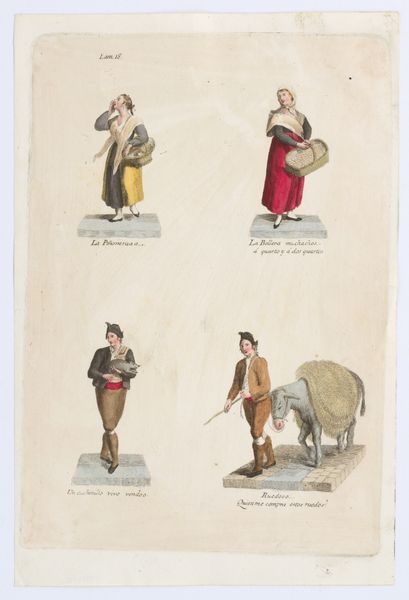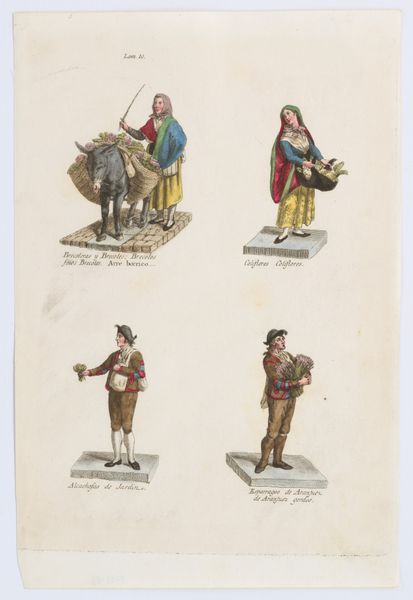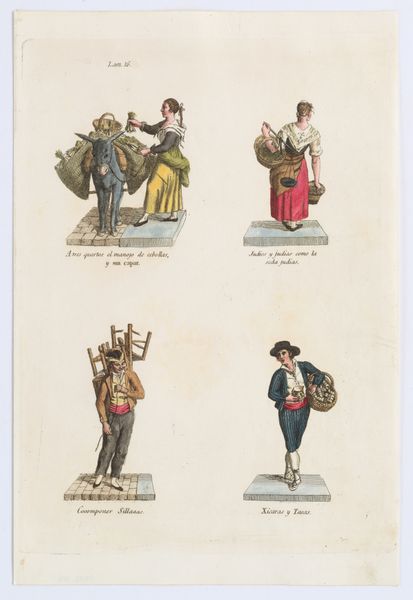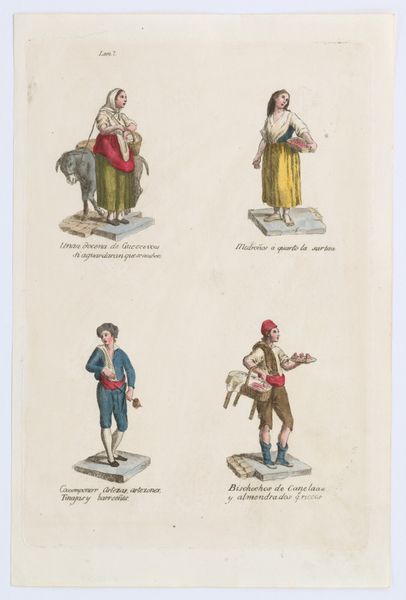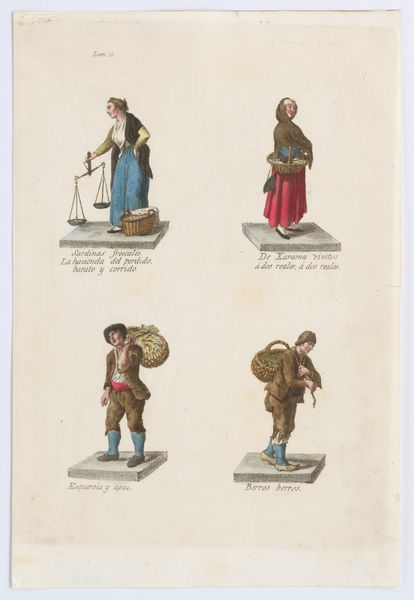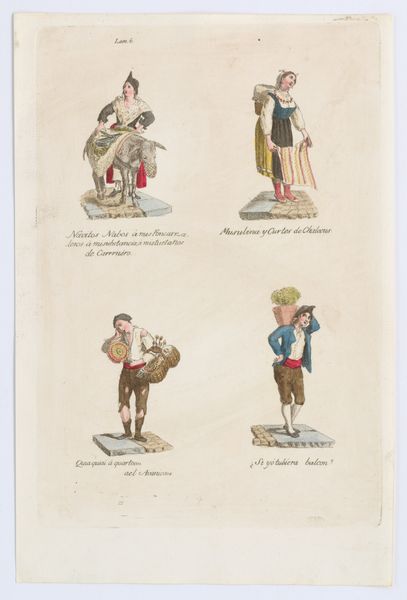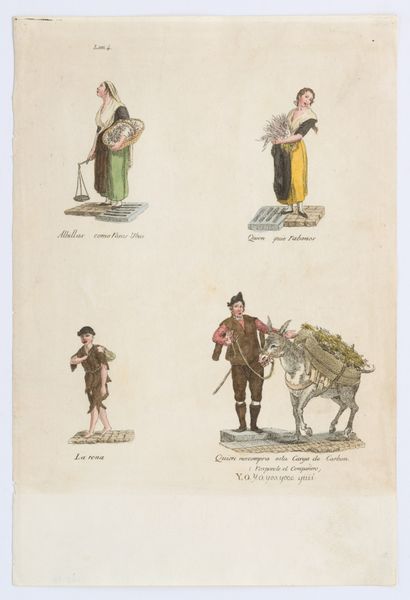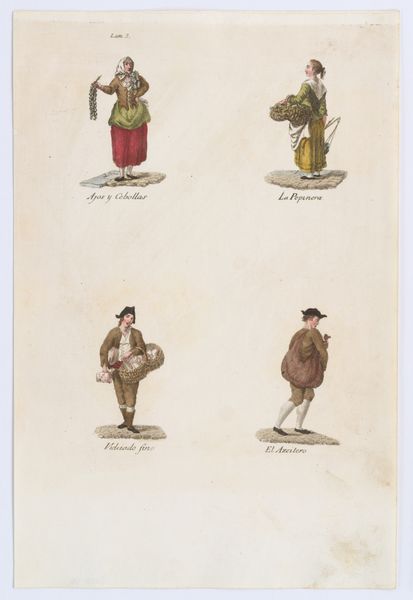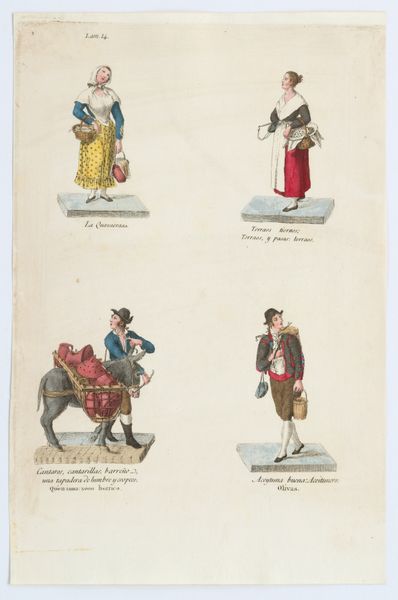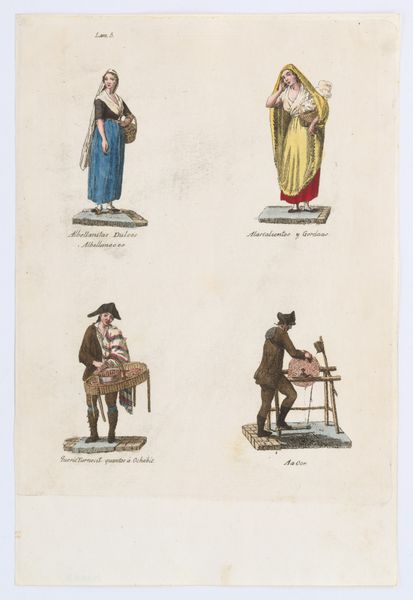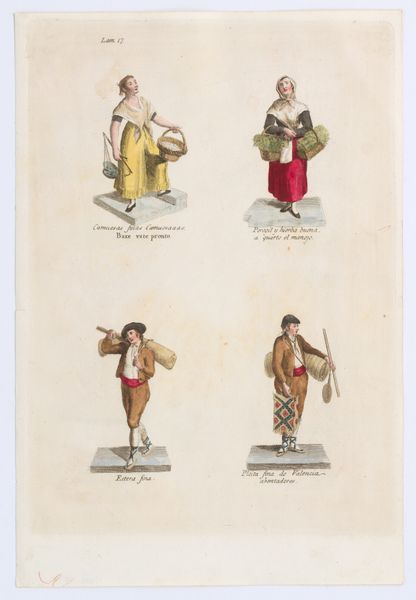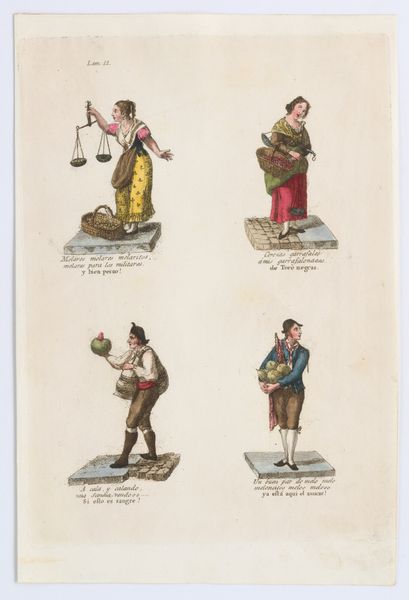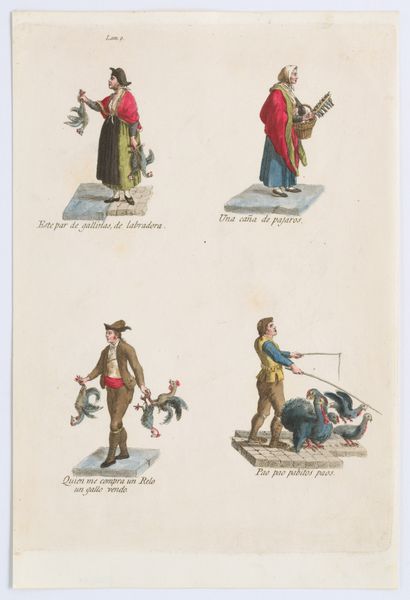
Plate 15: four street vendors from Madrid selling flowers, socks, and skins, from 'Los Gritos de Madrid' (The Cries of Madrid) 1809 - 1817
0:00
0:00
drawing, coloured-pencil, print, etching, watercolor
#
drawing
#
coloured-pencil
#
narrative-art
# print
#
etching
#
watercolor
#
coloured pencil
#
romanticism
#
genre-painting
#
academic-art
Dimensions: Sheet: 11 13/16 × 7 7/8 in. (30 × 20 cm)
Copyright: Public Domain
Curator: This print, created between 1809 and 1817, is titled "Plate 15: four street vendors from Madrid selling flowers, socks, and skins, from 'Los Gritos de Madrid' (The Cries of Madrid)." It's an etching, enhanced with watercolor and colored pencil. Editor: Oh, my! They seem poised on little stages, almost like porcelain figurines, stiff and proper. Curator: Precisely! Miguel Gamborino captured these figures during a fascinating period of upheaval in Spain. These prints offer glimpses into everyday life amidst political turmoil and social change. Editor: I find the muted colors rather intriguing, like faded tapestries, lending an antique air. It softens what might have been quite a harsh reality for these vendors. You almost don't see the struggles behind those expressions. Curator: I think Gamborino intended to do more than document; he sought to ennoble these everyday figures, elevating their status. Consider how genre painting allowed artists to validate the cultural and economic practices of specific communities, often on the margins. Editor: I see that now, looking at how each individual is framed. It’s like their sales pitch has been immortalized. But does anyone really cry out loud their goods? Or it is a representation or a memory of what has become gentrified? Curator: The series' name, "The Cries of Madrid," gives an exciting angle of reflection. Although not photographically accurate records, the set delivers a window to a world now distant. "Cries" at that time were everywhere; in the city squares, in the revolutionary manifestos, in daily lives. Editor: Perhaps Gamborino heard a more romantic tune amongst the “cries," maybe looking back, like remembering sounds from the past that are slowly getting quieter. It reminds us that behind historical shifts, common humanity endures, trading flowers or skins for survival. Thanks for bringing those thoughts into light. Curator: Thank you for joining me, to give light, in what seemed like a plain depiction. These windows of time are full of life, indeed.
Comments
No comments
Be the first to comment and join the conversation on the ultimate creative platform.
